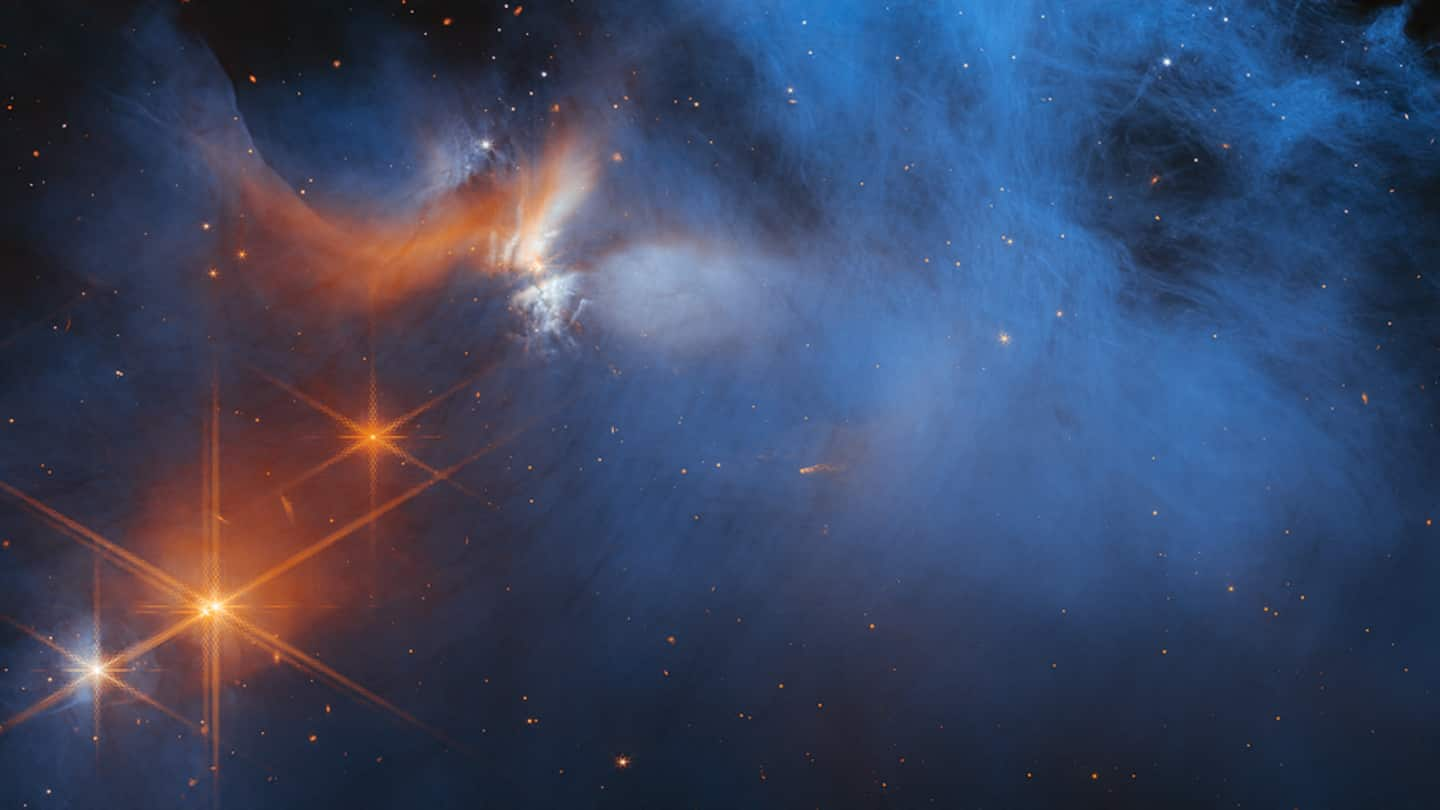
NASA's Webb unveils 'building blocks of life' in icy clouds
What's the story
An international team of astronomers, using the James Webb Space Telescope, has obtained an extensive inventory of the deepest, coldest ice measured in a molecular cloud. The image depicts the central region of the Chamaeleon I molecular cloud, which lies 630 light-years away. Frozen forms of a vast range of molecules, from carbonyl sulfide and ammonia to the simplest complex organic molecule-methanol, were identified.
Context
Why does this story matter?
James Webb, the $10 billion space telescope, has been offering us some stunning glimpses of the cosmos. This time, with the aid of its onboard near-infrared camera, the telescope has unveiled the "dark side of pre-stellar ice chemistry." Webb is an international program led by NASA along with the ESA (European Space Agency) and the Canadian Space Agency.
Findings
Ice is made up of crucial elements that support habitability
When talking about a habitable planet, ice is a key ingredient because it is composed of several crucial elements, namely carbon, hydrogen, oxygen, nitrogen, and sulfur, also referred to as CHONS. To date, this is the most comprehensive census of the icy ingredients that will make up future generations of stars and planets before they are heated during the formation of young stars.
Image
Light from the background stars is seen as orange dots
The wispy cloud material seen in blue at the center is lit up, in infrared, by the glow of the young, outflowing protostar Ced 110 IRS 4 seen in orange in the upper left corner. The orange dots behind the cloud are light from the background stars. The light can be used to detect ice in the cloud, which absorbs the passing starlight.
Official words
The findings provide several insights
"Our results provide insights into the initial, dark chemistry stage of the formation of ice on the interstellar dust grains that will grow into the centimeter-sized pebbles from which planets form in disks," said Melissa McClure, lead researcher. "These observations open a new window on the formation pathways for the simple and complex molecules that are needed to make the building blocks of life."
Information
The team also discovered other complex molecules
In addition to the identified molecules, which include carbonyl sulfide, ammonia, methane, and methanol, the team also found molecules more complex than methanol. For the first time, these findings prove that complex molecules form in the icy depths of molecular clouds before stars are born.
Explanation
Developing stars will inherit molecules in an "advanced chemical state"
According to Will Rocha, who contributed to the discovery, complex organic molecules suggest that "many star and planetary systems developing in this particular cloud will inherit molecules in a fairly advanced chemical state." "This could mean that the presence of precursors to prebiotic molecules in planetary systems is a common result of star formation, rather than a unique feature of our own solar system."